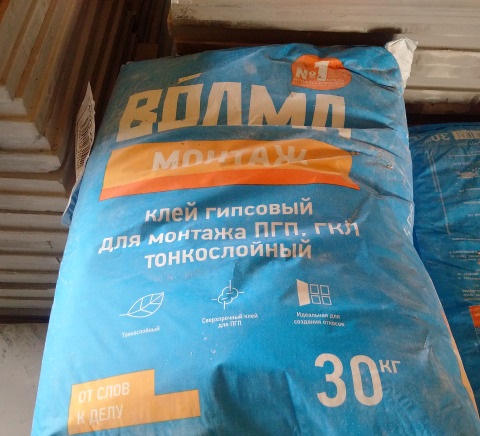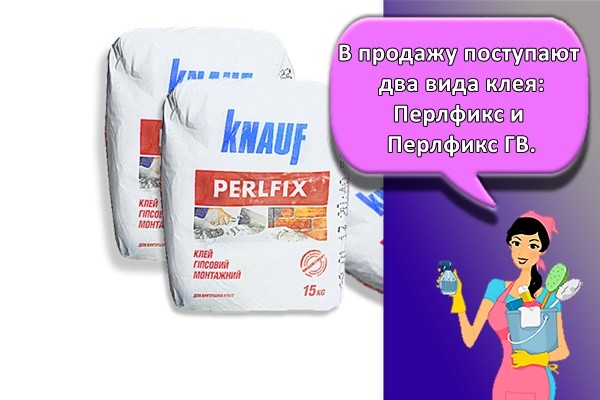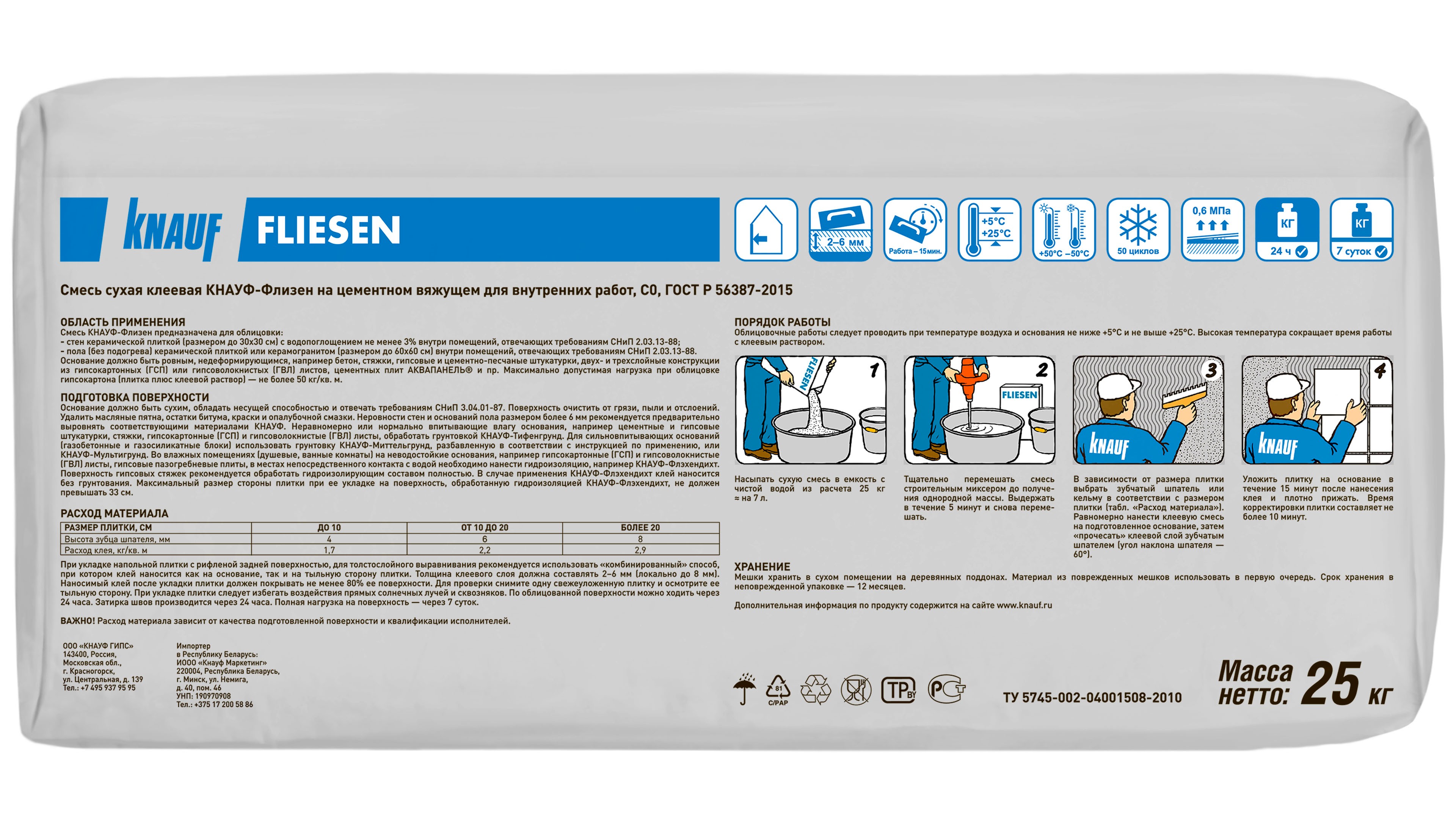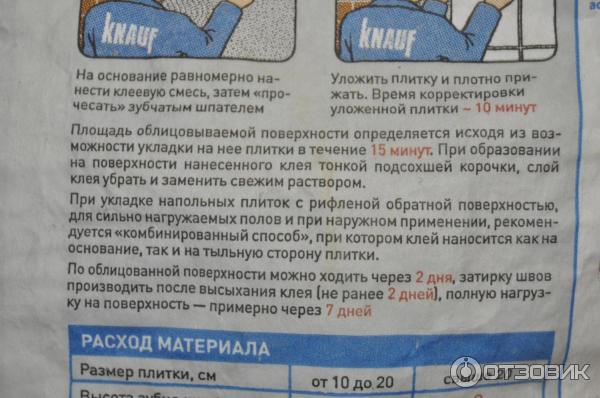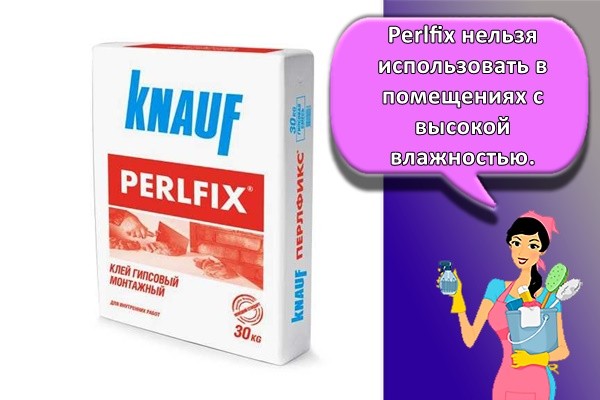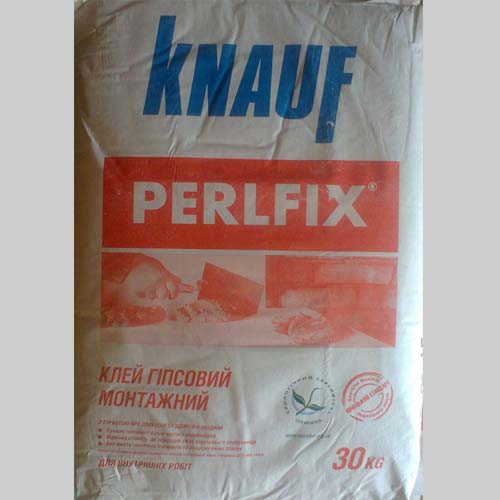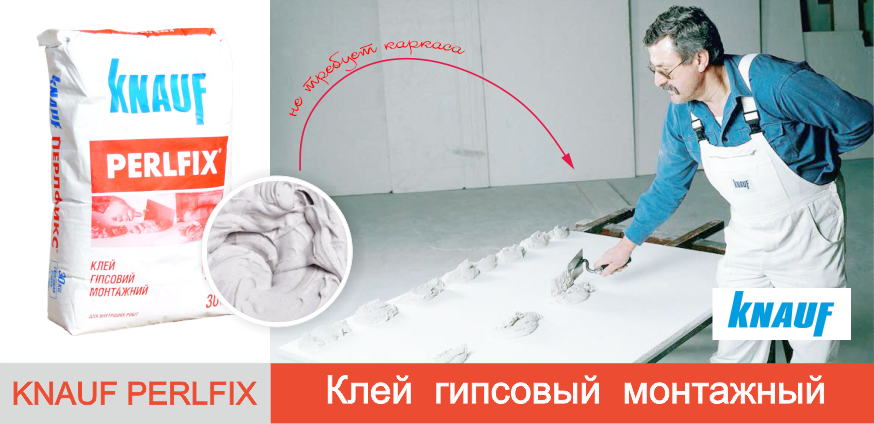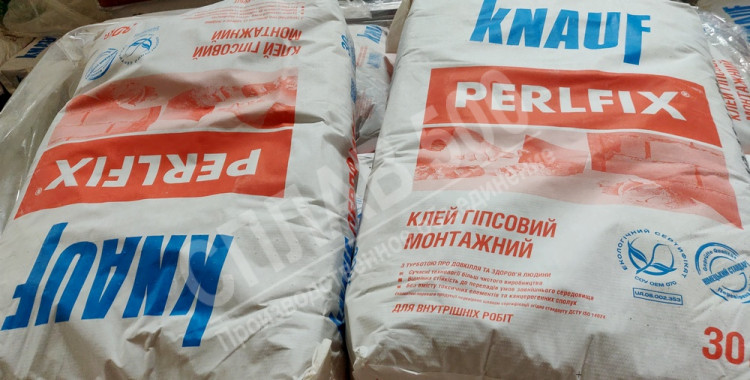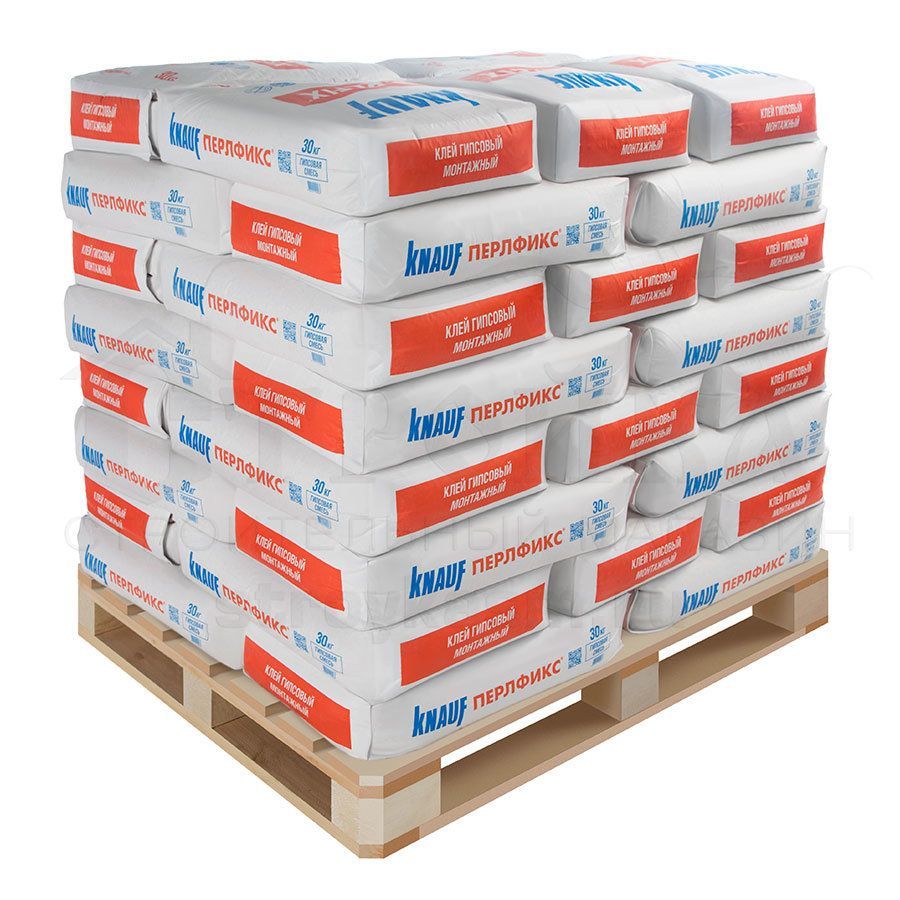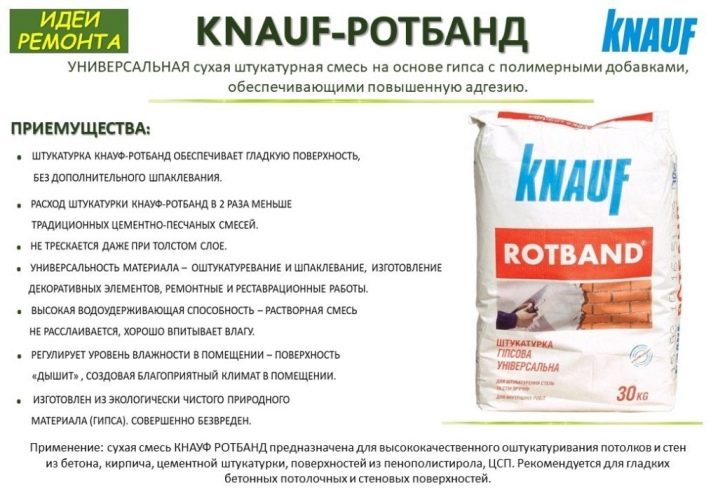Features and applications of glue
Mounting adhesive "Perlfix" is a dry mix on a gypsum base, including polymer additives that increase the level of adhesion to various substrates. This free-flowing mixture is intended directly for working with gypsum plasterboard (GKL), but is also suitable for cladding vertical surfaces with such building materials:
- Styrofoam;
- mineral wool;
- gypsum panels and blocks with a matte surface;
- expanded polystyrene;
- tongue-and-groove plates;
- insulating materials.
The composition provides reliable fixation of finishing materials even without the use of additional fasteners, and the manufacturer guarantees that it will not be damaged for several decades. The tool is very convenient to use: you just need to dilute it with water and apply it manually to the cladding sheets. The pasty mass does not flow, does not slip, ideally evenly distributed over the surface to be treated. Concrete, brick, various blocks can act as a basis.
There is a limitation in the use of Perlfix glue: it cannot be used in rooms with high humidity levels. Application is allowed only at normal and slightly high humidity, but subject to the exclusion of direct ingress of water
In the process of work, it is also important to pay attention to the quality of the preparation of the walls and finishing material. They must be completely dry, otherwise the reliability of the gluing will decrease.
Types and forms of release
On sale you can find two types of glue: standard and with the inclusion of gypsum fiber - "Perlfix" and "Perlfix GV", respectively. Both products are suitable only for interior work, their use outside buildings or in high humidity is unacceptable. Adhesives differ in the level of adhesion to drywall - in "Perlfix GV" it is slightly better, although both agents can be used on all the materials listed above. When buying, you should check the certificate of conformity so as not to buy a fake.
The adhesives are packaged in durable paper bags with internal protection of 15 kg and 30 kg. If the packaging is damaged, you will have to pour the dry building mixture into tight bags in order to completely exclude the access of moisture - otherwise, the gypsum in the composition may damp and deteriorate.
The composition of the glue
The basis, which ensures reliable fastening of drywall, is gypsum - a mineral substance from the sulfate class, environmentally friendly and completely safe to use. Due to the mineral base, the free-flowing mixture can have white, grayish and even pink colors, and in different batches of material, the shade can slightly change. The color of the mixture does not affect its technical characteristics and consumption per 1 m2. In addition to gypsum, the composition includes polymer additives that act as additional binders that reduce the porosity of the gypsum board and reinforce the surface.
Properties and characteristics
It is not necessary to add components other than ordinary water to dry glue; it does not require the introduction of hardeners or solvents. The finished solution has a slight moisture resistance, but it has a number of other positive properties:
- resistance to mechanical damaging factors;
- fast setting - in half an hour;
- the possibility of using for puttying, sealing joints between sheets of gypsum board;
- enhanced adhesion due to the introduction of special additives into the composition;
- long shelf life under the correct conditions;
- the possibility of using in unheated buildings;
- environmental friendliness of the composition.
Perlfix glue has a moderate cost - 350-380 rubles for a large package, which is also its advantage and allows you to reduce the overall repair costs. You can work with the product at temperatures of + 5 ... + 30 degrees, but it shows the best results at + 22 ... + 25 ° С. When the temperature drops to less than +5 degrees, glue detachment from finishing materials and walls is often observed.
The solution will have to be diluted in small portions - its viability is low (only 30 minutes). In order for the drywall fixation to be reliable, the layer must be sufficient - about 2 cm. The time for complete curing of the composition and the start of operation must be maintained, it is equal to 7 days. Only after its expiration, it is possible to give a full load to the treated surfaces. After the same period, it is allowed to grout the joints. The disadvantages include the short time for adjusting the position of finishing materials - up to 5-10 minutes, which may not be suitable for beginners.
The basic composition of glue for aerated concrete blocks, its varieties
The composition of special glue for aerated concrete can be discussed in general terms. The fact is that some polymer modifying additives and the characteristics of the cement used by manufacturers are not advertised and often refer to proprietary secrets. And the production technology of different companies can also have significant differences.
However, we can safely say that the mixture consists of:
- high quality Portland cement;
- quartz (sand) filler of a very fine fraction;
- a whole range of special mineral and synthetic additives that predetermine the special qualities of the adhesive mixture.
Adhesives are sold on sale in the form of a ready-made dry mix in the usual packaging for any builder or finisher: multi-layer paper bags, most often - 25 kilograms each. The composition is diluted with plain water according to the attached instructions. The glue is brought into working readiness immediately before the start of laying, since it has a rather limited period before the start of setting.
Despite the identity in purpose and basic composition, adhesive mixtures still have a certain classification.
So, they are divided into thick-layer and thin-layer
Thin-layer ones are intended for masonry with seams not exceeding 3 ÷ 5 mm. Such a composition is usually used with high-quality aerated concrete blocks that have almost perfect geometry. That is, the correction of the block positions with the help of a solution, if where required, is minimal.
On the packaging of this glue it is marked as “thin layer”. The thickness of the layer can be simply indicated, for example, from 2 to 5 mm.
Thick-layer compounds are more versatile, since they allow work with gas silicate blocks that have errors in shape and size. Their characteristics indicate that the layer thickness can reach 10 (sometimes more) millimeters.
It is unlikely that you will come across the wording “thick layer” on the packaging. The maximum seam thickness of 10 millimeters or even more is simply indicated.
It is clear that a possible thickness is indicated, but not at all obligatory. That is, at every opportunity, you should still strive to maintain the minimum - the reasons have already been discussed above.
* * * * * * *
The next classification criterion concerns the conditions for performing masonry work. Namely - adhesives are summer and universal.
Summer mixes - they are allowed to be used for outdoor work only at positive temperatures, usually above + 5 ℃.
The advantage of summer options is that they are usually made of white cement. That is, after the masonry dries up with thin-layer application, the seams become almost invisible against the background of the blocks. In some cases, this somewhat simplifies the finishing work.
Almost identical packaging, but with the indication of the "winter" and "summer" mixture. So you have to be more careful.
Winter adhesives allow construction work even at negative temperatures, of the order of -10 ÷ 15 ℃.And this lower limit must be either indicated on the package, or spelled out in the instructions for use of the composition.
By the way, such a gradation can be rather arbitrary. Some manufacturers offer universal mixtures in their assortment without dividing them into "winter - summer". It's just that when choosing a composition, if you already plan to carry out masonry, you should purchase one that meets the weather conditions and suits other selection criteria: seam thickness, color, cost.
Terms of use
All recommendations for the use of glue are indicated by the manufacturer on the packaging. The instruction is simple and straightforward, the exact proportions for diluting the mixture are indicated there.
How to calculate consumption
It is better to make all the calculations in advance in order to purchase the required amount of glue. The approximate consumption per 1 m2 is 5 kg of the finished mixture, as indicated by the manufacturer. It can be slightly higher or lower, depending on specific conditions, for example, the quality of the surface, the degree of its roughness, as well as the experience of the master.
How to glue drywall on "Perlfix" - instructions
First you need to prepare the base. Dust, old coating particles, and other contaminants are removed from the wall or other surface. Since drywall is a porous material, it should be primed or primed before use. It is advisable to apply the primer in 2 layers.
Next, you need to properly dilute the glue. For a package of 30 kg, 15 liters of water are taken (proportion - 2: 1). It is imperative that the powder is added to the water, but not vice versa, otherwise the lumps of the mixture will be impossible to break. An accurately measured amount of water at room temperature is poured into a large container, then glue is poured in portions, mixed using a construction mixer or a drill with a suitable nozzle.
It is important that all tools and utensils, as well as water, are clean, otherwise the quality of the finished product will decrease. If the solution comes out too dense, it can be diluted a little more with water until a thick sour cream consistency is obtained.
Beat the solution until the lumps disappear completely, so that the mass becomes homogeneous.
The thickness of the glue layer is about 2 cm. The solution is applied not in a continuous manner, but by the dot method - in sections every 2-4 cm, in rows in a checkerboard pattern. If the GKL sheet is thin (less than a centimeter), you can apply glue along the middle line and along the edges, as well as diagonally. Thicker sheets require a checkerboard pattern, but with their small size, 2 rows of glue spots are sufficient. Large sheets of drywall of large thickness are treated with glue, they also come to the wall, then immediately fix the material in its proper place. After applying the gypsum board, you need to align the sheet, applying a level and accurately observing the possible adjustment time.
Storage conditions
The shelf life during which the manufacturer guarantees the high quality of the glue is 6 months. It should be stored in a dry place, despite the presence of several levels of protection for the package. The need to exclude high humidity is associated with the presence of gypsum in the composition of "Perlfix". When storing, it is best to put a pack of glue on a wooden pallet, this will help to avoid dampness of the mixture.
Selection and application
A conscious choice of glue for a specific task can be made after preliminary verification of its characteristics and conditions for further use of the glued products. The assessment is made according to the following criteria:
- The parameters of humidity and temperature in the room where work will be carried out using Moment glue.
- What materials will be connected, their structure and homogeneity.
- Is the Moment supposed to come into contact with food?
- Required tensile strength, elasticity of the seam.
- What products will be connected, the size of the required seam (thick compositions of Moment glue are better for a thick seam).
- The ability of the resulting compound to withstand certain operational loads and influences: shock, vibration, deformation, other mechanical loads, frost, heating, contact with water, aggressive substances.
- No aggressive action of the glue. Momentum on the material of the surfaces to be joined.
- Which method is chosen for gluing - hot, cold.
- The ability of the working composition to completely fill the voids of porous materials.
For each type of Moment rubber glue, the packaging contains instructions for its correct and effective use. In a simplified version, the gluing technology consists of the following stages:
- Thorough cleaning of dirt on work surfaces, sanding (if necessary), degreasing.
- Application of the composition to the glued surfaces. If hot gluing is performed, the composition can be heated with a technical hairdryer. With the cold method of gluing rubber to plastic, the composition is first applied to the surface of the rubber product and kept for 15-20 minutes, after which both surfaces to be joined are treated with glue.
- Tight compression of parts for a few minutes and, if possible, further installation under the press.
An interesting way to compress workpieces from a specialist:
Minimum layer of glue application Moment - 2 mm. For joining thin and elastic materials (for example, when repairing a rubber boat), a seam of 1 mm is allowed. In this case, the use of gauze for reinforcement is recommended. The hardened seam will gain its maximum strength in 1-2 days.
Application rules
It is important to observe temperature ranges during operation. For gluing, you need a trowel and a notched trowel.
Preparatory work
Before starting cladding you need:
- cleaning from dust, dirt, old finishing materials, paint;
- degreasing with solvents;
- drying of the surface;
- when facing a warm floor, turning it off a day before work;
- priming highly absorbent substrates;
- prevention of contact with water, providing the necessary waterproofing.
Breeding rules
When diluting the adhesive, use protective goggles and a respirator. Knauf is diluted in the following proportion: 1 kg of dry glue requires 1 glass of water. First, liquid is poured, after which powder is added, the mass is kneaded with a construction mixer until a homogeneous solution is obtained. The finished mixture is covered with a lid for 5 minutes, and then mixed again.

How to work with glue
Take the glue with a trowel and put it on the spatula. Apply to the wall or floor, distribute the adhesive evenly over the surface, and then draw it over the adhesive layer with the trowel teeth. For outdoor work, apply the glue to the tiles as well. After that, attach the facing material, press it well to the base. Wipe off the protruding adhesive layer immediately with a damp cloth. When working with glue, avoid direct sunlight and drafts. It is necessary to carry out work with gloves.
Advantages and disadvantages
Knauf Perlfix glue has both a lot of advantages and some disadvantages, which must be taken into account when buying. One of its main advantages is the ecological purity of the mixture, as well as the absence of a toxic odor, which makes it safe for health. When using glue, repair work is much faster and easier. Due to the absence of the need to use a hammer or hammer to hammer nails and self-tapping screws, your repair will be absolutely silent and economical, since you do not have to spend money on additional tools. The composition is applied with a special ribbed spatula, either immediately on the entire surface, or with flat cakes.
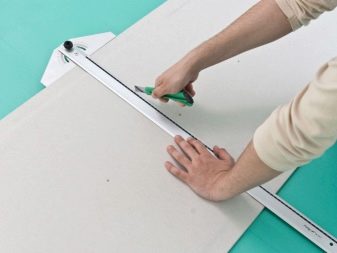

A huge advantage of Knauf itself is availability of quality certificates for each of its products, which guarantees the high quality of all goods, as well as careful control at different stages of production.
However, the glue mixture also has several disadvantages, one of which is the long drying time, which is a week. This characteristic is associated with the components that make up the Knauf glue. After drying, the glue becomes very strong and provides a reliable attachment for many years. During this process, that is, all seven days, the composition will increase the level of strength and, as it were, shrink the material. During this period, it is necessary to postpone any putty work to prevent the appearance of cracks.
It is only ten minutes, and sometimes five. The glue loses its plasticity in a short time, which is why any changes in the imposition of sheets, the elimination of the appeared cones or pits should occur in a short time. After ten minutes, all your efforts will be in vain, as the mixture will no longer drag. Despite such a quick setting of the product, it will finally harden only after a week. The cost of this product is quite democratic and amounts to 300-350 rubles per bag.
Application
Gypsum glue KNAUF-PERLFIX is intended for gluing Knauf gypsum boards (GKL), insulating materials (expanded polystyrene and mineral wool boards) on brick, concrete, plastered wall bases with an uneven surface, for mounting gypsum tongue-and-groove plates (GKL).
It is used for interior work.
Advantages
Fast leveling of wall surfaces using Knauf sheets without installing a supporting frame. - The use of Knauf-Perlfix glue allows you to reduce the loss of room area when facing walls. - The material is made of environmentally friendly natural mineral (gypsum) and does not contain substances harmful to human health.
Specifications
Consumption:
- gluing plasterboard: 5 kg / m2;
- installation of GWP: 1.5 kg / m2.
Packing: paper bag 30 kg.
Shelf life: 6 months in undamaged packaging.
Gypsum dry mixes have different shades from white to gray and even pink. This is due to the presence of natural impurities in the gypsum stone.
The color of the mixture does not affect its characteristics in any way.
Surface preparation
To reduce the absorbency of the substrates and prevent uneven setting of the plaster mortar, gypsum and cement-lime plasters are treated with a primer diluted with water in a ratio of 1: 3 or a primer. Masonry made of gas, aerated concrete blocks, ceramic or silicate bricks is primed using diluted water in a ratio of 1: 2 or. Dense, non-absorbent surfaces, for example, concrete, are treated with a Knauf-Betokontakt primer to improve the adhesion (adhesion) of the mortar of the assembly mixture to the wall surface. Allow the primer to dry after application. Avoid dusting the primed surface.
The dry mix is completely ready for use
Perlfix gypsum assembly adhesive is supplied as a ready-to-use dry mix. The use of additional components during its preparation is not required. So do not add any substances to the solution yourself, as this can negatively affect the final properties of the mixture. If it is necessary to carry out repairs in non-standard conditions, the manufacturer also produces models that differ from the base glue, which are specially adapted to special situations.
The applicability of the glue for other purposes should be checked with the specialists or official representatives of the manufacturer. 24/7 technical support is available on the company's website. There you can also find phone numbers by which you can communicate directly with the operator. Reading the thematic forum, where people share their personal experiences and experiments carried out during the repair, can also help solve this issue.
It is best to purchase building material at a certified point of sale. There is a guarantee of authenticity that cannot be given in the ordinary spontaneous market.The price of Perlfix glue on average in the country is 300-350 rubles per bag. This is a very small amount, given the performance of the product. When purchasing a large batch, you can get a good discount or negotiate with the store for free delivery to the desired point.
Perlfix glue from Knauf: composition, advantages, application
Among the variety of building adhesive mixtures, the Perlfix glue from the Knauf company stands out. The material meets the highest requirements. Its main purpose is the installation of drywall on various types of surfaces - concrete, brick, etc. Despite the long drying time, this glue is one of the best in terms of strength among analogues.
Knauf is a company known for the production of high quality construction products. "Perlfix" glue is a dry mix based on gypsum, improved with polymer additives. To prepare a solution, it is enough to dilute the powder with water. It is intended for gluing sheets of plasterboard, polystyrene, polystyrene and gypsum boards to various substrates, including uneven ones. On sale are bags with a mixture of 15 or 30 kg.
Technical characteristics of gypsum glue:
- Has increased adhesion.
- The composition is environmentally friendly and safe for humans.
- Designed for indoor use only.
- It is used at temperatures from +5 to +30 degrees.
- Can be used in unheated rooms.
- Resistant to moisture. Withstands high humidity, suitable for finishing kitchens, bathrooms.
- Suitable for small putty work.
- The long shelf life of the finish is several decades.
- Grips in 30 minutes, allows you to adjust the position of finishing materials. Complete drying occurs after 7 days.
- Resistant to mechanical stress.
- The shelf life of the composition is 6 months.
- The average consumption of glue per 1 m 2 is 5 kg. The exact amount depends on the type and evenness of the surface.
Perlfix assembly glue is a great opportunity to save money on repairs. Due to its strength, there is no need to use additional fasteners. The glue line retains its properties for many years.
To dissolve gypsum glue, an average of 15-16 liters of water is taken per bag (30 kg), that is, in a ratio of approximately 1: 2. Any plastic container is suitable for preparing the mixture. First, water is poured into it, and only then glue is poured in a thin continuous stream and stirred with a construction mixer until a homogeneous consistency, without lumps.
Wall preparation is required prior to glue application. They need to be cleaned of dirt and particles of the old finish and primed, regardless of the type. The best installation result will be when using Knauf primer products.
Advice! The powder is stored strictly in a dry and well-ventilated area, otherwise, due to the increased content of gypsum, the glue will damp. If the packaging has been broken, the mixture is poured into a whole bag and sealed.
Instructions for using the finished Perlfix:
- The glue is distributed on the wall with a rubber notched trowel pointwise with an interval of 3-4 cm.
- The glue is applied along the center line of the sheet in one row or staggered. The recommended layer thickness is 2 cm.
- For thick finishing materials, you will need two rows of glue, as well as additional processing around the perimeter.
- Ready-made drywall glue is usable within 30 minutes. The powder should be diluted in the required amount. It is not worth diluting the old glue with water, as its quality becomes several times worse.
- The gypsum plasterboard is firmly attached to the wall, leveled. Correction is best done in the first 10 minutes after gluing.
- The finish should be left alone for 7 days until it dries completely.
The use of Perlfix glue greatly facilitates installation work. This durable composition adheres well, but allows you to adjust the position of the finish for some time.Gypsum glue is a great alternative to self-tapping screws and metal fasteners that can damage the drywall structure.
What is the difference from polyurethane foam
Polyurethane foam or glue-foam? It is difficult for an uninformed person to figure it out. To understand the difference between these materials, you need to compare them. Polyurethane foam is a polyurethane sealant. Purpose - installation. Additionally, it has sound and heat insulating properties. Used when installing doors, filling gaps, sealing seams. It can be used to fix building materials, but the expansion it gives when solidifying makes fixing problematic.
Foam adhesive is a polyurethane adhesive. Its main function is to connect parts. It differs from polyurethane foam in its qualities. Its adhesive ability and adhesion is several times better than polyurethane foam. This is achieved through special additives. The foam adhesive does not expand. The increase in volume is minimal. In order to evenly glue the panel to the wall with mounting foam, additional fixation is needed. Otherwise, the foam, expanding, will lift the slab. When working with foam glue, no fixing devices are required. The panel is simply applied to the wall and pressed.
General information about the Knauf company
It is a world-renowned manufacturer of construction products. Its materials are used for interior and exterior decoration, as well as for machine application.
The organization was created in 1932 in Germany by two brothers - Alfons and Karl Knauf. Their company has proven itself as a manufacturer of high quality finishing materials. Now she has reached the world leadership in the construction industry.
The first factory was opened in Bavaria in 1949. Initially, the company produced only gypsum mixes, and from the beginning of 1958 it began to produce gypsum plasterboards as well. In order to finally gain a foothold in the market and expand the range of products, Knauf in 1970 acquires a stake in Deutsche Perlite GmbH (the company produced dry cement mixtures), and soon a plant for the production of fiberglass thermal insulation in Shelbyville (USA). This diversified risks and brought the organization to a new level.

In 1993 the Knauf company opens factories in the CIS countries. Today it is a successful company with a worldwide reputation for the production of high-quality and durable materials.
Analogs of glue
There are similar products in stores, which practically do not differ in properties from Knauf Perlfix. The most popular ones are:
- ByProc - universal gypsum glue GKU-450. It is used for interior work at normal and low air humidity. It is used for fixing sheets of gypsum board, heat and sound insulation, mineral wool and expanded polystyrene, gypsum fiber. Also, the glue is ideal for gluing stucco moldings, a number of decorative materials and small tiles.
- Volma Montage. This dry mixture provides high adhesion and long service life, allows you to attach gypsum elements, gypsum boards, tongue-and-groove plates, sheets of thermal insulation to the walls. The mixture has a low consumption - up to 2 kg per 1 sq. m, as well as the viability of the solution up to 1 hour.
- Perel Gipsel - the glue is famous for its frost resistance, therefore it can be used in unheated rooms. The time for adjusting the position of the plates glued to this tool is only 5 minutes, so it will be quite difficult for a beginner to work with it.
- "Osnovit" - Gipsform MG assembly glue. It is used for fastening all types of gypsum plasterboard and gypsum fiber, as well as expanded polystyrene. Produced in medium-sized bags - 20 kg.


